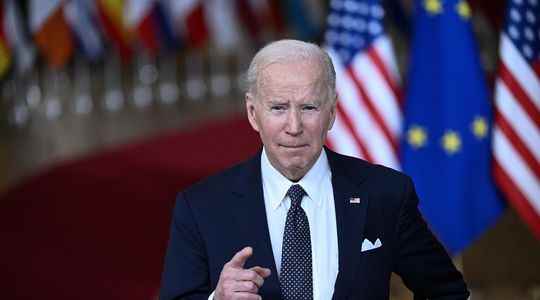On Monday March 21, Joe Biden met with the CEOs of major banks and oil and gas companies. During this meeting, Jamie Dimon, CEO of JPMorgan Chase, launched the idea of a new Marshall Plan to ensure Europe’s energy security. The following Friday, Biden announced an increase in liquefied natural gas exports to Europe of at least 15 billion cubic meters, or more than 10% of annual US exports.
This boost should help Europeans build up reserves in preparation for the coming winter and reduce their energy dependence on Russia. It was greeted with enthusiasm, as the war in Ukraine caused energy prices to explode. Is this for all that the prelude to a larger scale system, justifying the reference to the Marshall Plan of 1948?
At the time, the American industry, put at the service of the war, is still in conversion and the government fights against inflation and recession. However, Harry Truman orchestrated massive monetary transfers to Europe, in order to finance the reconstruction of the cities and factories destroyed by the bombings. The American president fears that, tired and impoverished, the peoples of Western Europe will be seduced by communist ideology. The electoral successes of the French and Italian communist parties fuel his fears. Europe, he thinks, will only be able to escape Soviet influence if it regains growth.
Today, the objective is near: to contain Moscow’s influence and territorial ambitions. Less dependent on Russian energy, European countries will be able to sanction the country more severely in the event of a new conflict with its neighbours. Like yesterday, the cost to the United States is real. If America is a net exporter of fossil fuels, unlike Europe, the energy market is nevertheless global. Prices at the pump therefore followed similar trajectories on both sides of the Atlantic. Average inflation and the popular discontent that accompanies it are even stronger in the United States. In addition, the increase in gas exports to Europe will require the development of costly port infrastructures aimed at liquefying and storing the gas before shipping it on tankers.
But the comparison with the post-war period has its limits. First, the amounts are, for the time being, without common measure. From 1948 to 1952, American aid exceeded 2% of the recipient countries’ GDP. Today, the additional liquefied natural gas exports announced represent only 0.03% of the European Union’s GDP. Tomorrow, the United States could in theory increase its energy exports, especially if it intensifies the exploitation of bituminous shale, of which it has large reserves. But, in practice, the hydraulic fracturing technique (“fracking”), necessary to extract the oil and gas trapped in these shales, remains costly and risky. Many oil companies have gone bankrupt since 2015, and banks are so far reluctant to finance new sites despite the incentives created by record energy prices. In addition to the economic risk, the environmental cost of fracking is considerable, arousing the opposition of many elected Democrats.
The risk of going from one addiction to another
Above all, the United States can no longer be on all fronts. With an economy representing 25% of global GDP, compared to 40% in 1960, they must choose their battles. However, the Russian threat remains less important than the Chinese rivalry. The energy support provided to the Europeans could therefore be short-lived, especially if Trump takes over the presidency in 2024. The former president has often affirmed his wish to reduce the United States’ participation in the financing of multilateral organizations, including NATO. . He has long displayed his admiration for Putin, and many Republican voters remain opposed to any involvement in the current crisis.
After 1945, Europe was rebuilt under American infusion. The institutions created to distribute the money from the Marshall Plan even served as a prelude to the construction of Europe. Today, the autonomy of our continent remains at stake, but it would be risky to bet once again on American fuel to preserve it.
